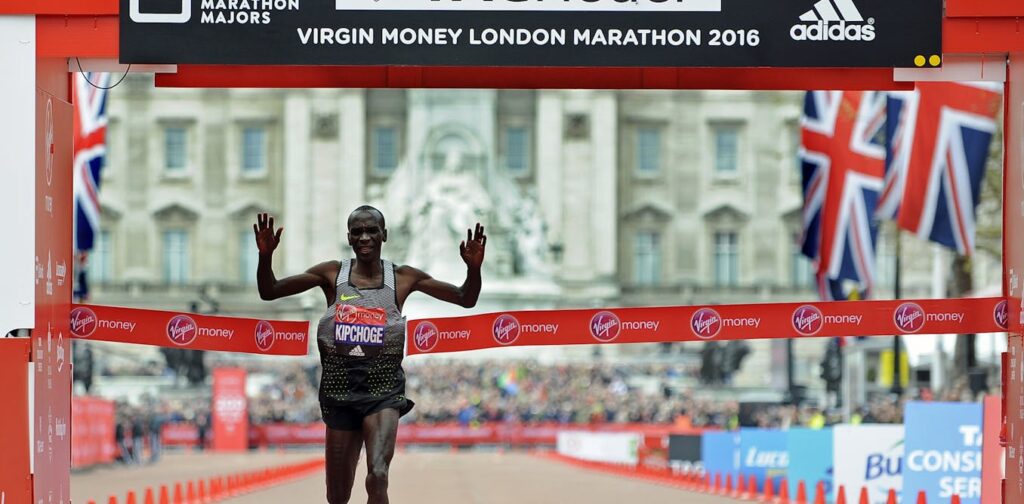Eluid Kipchoge’s Near-Record Marathon: The Role of Nutrition and Gut Training
In an extraordinary feat of athletic endurance, Kenyan runner Eliud Kipchoge came tantalizingly close to breaking the two-hour marathon barrier, finishing just twenty-six seconds shy of the elusive goal. This remarkable time, achieved during a carefully orchestrated event hosted by Nike in Monza, Italy, was the fastest ever recorded over the 26.2-mile distance. However, due to the use of rotating pace setters and specialized drink delivery methods, Kipchoge’s performance did not qualify as an official world record according to the IAAF, the governing body for athletics. Despite this, the significance of Kipchoge’s achievement cannot be overlooked as it has reignited discussions about the limits of human endurance.
The Sub-Two-Hour Marathon: A Modern-Day Challenge
The excitement surrounding a sub-two-hour marathon mirrors the legendary pursuit of the four-minute mile in the 1950s. As marathon records have gradually improved—currently standing at 2:02:57, set by Dennis Kimetto of Kenya—the focus has shifted toward breaking this seemingly unachievable barrier. Nike’s initiative of controlling numerous race variables aimed to position elite athletes like Kipchoge in a situation where the sub-two-hour marathon could be realized. This event served as a pivotal moment in the ongoing evolution of endurance running.
Tuning into Optimal Performance
So, what factors contributed to Kipchoge’s astonishing performance? Aside from his innate athletic talent, Kipchoge utilized an extraordinary combination of training strategies, environmental considerations, and technology to optimize performance. Nutrition, in particular, plays a crucial role in marathon running, necessitating a careful balance of carbohydrate intake to fuel the athlete’s energy needs.
The Science of Carbohydrate Consumption
Marathon runners rely heavily on carbohydrates, which serve as a vital energy source. The maximum carbohydrate intake for optimal performance is estimated to be around 90g per hour, especially when diverse carbohydrate types are involved, such as maltodextrin and fructose. However, each athlete must navigate the delicate balance of maximizing carbohydrate absorption while avoiding gastrointestinal discomfort—a common challenge among runners. Studies have shown that even a modest carbohydrate intake can lead to substantial gut issues, highlighting the significance of individualized nutrition strategies.
The Complexity of Marathon Nutrition
Most commercially available sports drinks hold a 6% carbohydrate concentration; hence, ensuring sufficient carbohydrate intake while maintaining effective hydration can be a challenge. For instance, to achieve the necessary 60g of carbohydrates per hour, a runner may need to drink about two liters of fluids throughout the race, a considerable volume at high speeds.
Innovative Nutritional Strategies in Action
During the Nike event, Kipchoge’s team implemented innovative nutrition strategies to enhance his performance. For example, he consumed a 14% carbohydrate drink to minimize the total liquid volume needed. Additionally, drink stations were strategically positioned to permit the runners to hydrate with smaller amounts every 2.4 kilometers, preventing fluid build-up in the stomach. These adjustments required rigorous practice, as the body must adapt to concentrated drinks, especially during intense exercise. Kipchoge effectively trained his gut to tolerate higher carbohydrate concentrations, which played an essential role in his high-performance output.
Understanding Gut Training and Endurance
Training the gut has become a critical aspect of distance running, as evidenced by research from the Australian Institute of Sport, which demonstrated that high-carbohydrate feeding could enhance carbohydrate utilization during exercise. While the exact role of nutrition in Kipchoge’s near-record performance remains an area for further exploration, anecdotal evidence from his fellow Nike athlete, Zersenay Tadesse, indicates the potential for nutrition strategies to yield significant improvements. Tadesse, notorious for struggles with marathon nutrition, achieved a personal best time in the Nike event, suggesting that properly training the gut may contribute to enhanced performance outcomes.
The Future of Marathon Running
As the quest to break the two-hour marathon barrier continues, the interplay of nutrition, innovative training methods, and athlete preparation will likely play an increasingly prominent role. While we may not fully understand the precise impact of nutrition on marathon running, what is evident is that when an athlete eventually breaks this monumental barrier, it will likely involve advanced nutritional insights and a well-trained gut at its core. The future of marathon running is not just about speed; it’s also about how well athletes can fuel their bodies to reach new heights.
